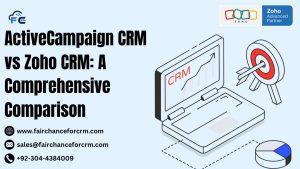Businesses want scalable and effective solutions in the fast-paced digital environment of today. Combining cutting-edge frameworks like Next.js with robust enterprise resource planning (ERP) systems like Odoo is revolutionizing business across industries in response to the increasing demand for responsive and personalized applications. This article explores the ways in which Next.js and Odoo collaborate to produce highly configurable, scalable, and adaptable business solutions.
Also Read:
- How to Copy Odoo Docker with Database
- Odoo Pactera – A Powerful Partnership
- Kubernetes and Odoo
- Why Doesn’t Odoo Process Provide the Option to Block
- How to Create Product Variants in Odoo
What is Next.js and Odoo?
Let’s first examine Next.js’s definition and the reasons behind its widespread use among developers before looking at how it works with Odoo.
A React-based framework called Next.js makes it simple for developers to create server-side rendered, dynamic, and static web applications. It is well known for its optimization features, quick performance, and simplicity of deployment. With features like automatic code splitting, file-based routing, and built-in support for static site generation (SSG) and server-side rendering (SSR), Next.js is often the go-to choice for developers looking to build scalable, modern web applications.
Integrating Next.js and Odoo: Why It Makes Sense
The Need for a Modern Front-End Framework
While Odoo provides a powerful back-end for managing business processes, its default user interface (UI) is not as sleek or modern as some businesses might require. This is where Next.js comes in. Businesses can use Odoo’s robust backend while creating a unique, responsive, and high-performing front-end that satisfies contemporary design requirements by integrating Next.js with Odoo.
Next.js ensures that the user interface is responsive, fast, and accessible on all devices, allowing businesses to create a seamless user experience. By rendering pages statically or on the server, it significantly improves the website’s speed and load time, providing users with a more seamless experience.
Creating a Seamless User Experience
By using Next.js, businesses can build a responsive and interactive UI that connects directly with Odoo’s backend.This enables them to view real-time data from Odoo in a contemporary, user-friendly interface, including product inventories, customer information, and sales orders.
How to Integrate Next.js and Odoo
Integrating Next.js with Odoo may seem complex, but with the right approach and tools, it becomes a streamlined process. Here’s how businesses can achieve this integration:
1. Setting up an API Layer with Odoo
Odoo is built with a rich set of APIs that allow for seamless integration with external systems. To connect Next.js with Odoo, the first step is to create an API layer that will allow Next.js to fetch data from Odoo.
Odoo provides a JSON-RPC API that can be used to interact with its backend. Using this API, Next.js can send requests to Odoo’s server, retrieve necessary data (such as orders, products, customer information, etc.), and display it on the front-end.
2. Using Next.js for the Front-End
Once the API layer is set up, the next step is to build the front-end of the application using Next.js. Next.js allows developers to create dynamic web pages that can display live data from Odoo in real time. Features like server-side rendering (SSR) or static site generation (SSG) can be used to optimize the performance and SEO of the web pages.
For example, if a customer checks their order status or makes a purchase, Next.js can pull this data from Odoo through the API and display it instantly, providing a smooth user experience.
3. Real-Time Data Synchronization
One of the most important benefits of integrating Next.js with Odoo is real-time data synchronization. Since both Next.js and Odoo operate in real-time, businesses can display updated information instantly. For example, if an order is placed on the Odoo back-end, Next.js can reflect that change on the front-end without the need for manual refreshing or page reloading.
Businesses may make better decisions and give customers a better experience because to this real-time synchronization.
Benefits of Integrating Next.js and Odoo
Odoo and Next.js integration provides a number of significant benefits that can help any company trying to build a cutting-edge, scalable, and effective system.
1. Scalability
Because of its scalability architecture, Next.js is a great option for expanding companies. By using Next.js as the front-end for Odoo, companies can build applications that grow with their needs. Odoo’s modular structure complements this by allowing businesses to add new apps as they scale.
2. Improved Performance
One of the standout features of Next.js is its ability to enhance the performance of web applications. End consumers benefit from speedier page loads because to features like server-side rendering (SSR), static site generation (SSG), and image optimization. This is particularly beneficial for Odoo-based applications, which can sometimes feel sluggish with larger datasets.
3. Customization
Odoo is already highly customizable, and integrating it with Next.js takes this customization a step further. Next.js allows businesses to design highly personalized UIs that match their branding, user preferences, and business requirements. Businesses may create a distinctive user experience by integrating real-time data streams, interactive components, and custom pages into the Next.js front-end.
4. Better User Experience
User experience is critical in today’s digital-first world. By integrating Next.js with Odoo, users are guaranteed to interact with a cutting-edge, quick, and responsive interface, increasing user happiness. Even while working with a lot of data, the application feels quicker and more responsive thanks to its ability to dynamically load material and pre-render pages.
5. SEO Optimization
Next.js offers built-in SEO optimization through its server-side rendering (SSR) and static site generation (SSG) features. This can greatly increase a company’s search engine presence and increase website traffic. Businesses may increase their chances of ranking higher in search results by leveraging SEO-friendly websites that load quickly and provide relevant content by using Next.js for the front end and Odoo for the back end.
Case Study: E-Commerce Integration with Next.js and Odoo
Let’s take an example of an e-commerce business that uses Odoo to manage their inventory, sales, and customer information. The company may build a unique front-end that links straight to Odoo’s back-end to manage orders, show items, and give clients real-time updates by integrating Odoo with Next.js.
For example, the e-commerce website could use Next.js to display product listings, show real-time stock availability, and allow customers to check the status of their orders. All of this data is fetched from Odoo via the API, ensuring that the business’s website is always up-to-date with the latest information.
Conclusion
Businesses can benefit from a strong ERP back-end and a contemporary front-end by integrating Next.js and Odoo. With Next.js’s ability to create fast, dynamic, and customizable UIs and Odoo’s rich set of business applications, businesses can provide a seamless, real-time user experience while managing their operations effectively. Whether you’re an e-commerce company or a manufacturing business, integrating Next.js with Odoo can help streamline your processes and drive growth.
FAQs
What are the benefits of using Next.js and Odoo?
Scalability, enhanced performance, enhanced user experience, real-time data synchronization, and SEO optimization are the primary advantages.
How do I integrate Next.js with Odoo?
The integration process involves setting up an API layer in Odoo, using Next.js for the front-end, and syncing data in real-time between the two platforms.
Is Next.js suitable for large-scale applications with Odoo?
Yes, Next.js is perfect for companies that require a strong front-end for their Odoo back-end because it is very scalable and capable of handling large-scale applications.
Can Next.js improve the performance of my Odoo system?
Yes, Next.js enhances performance by leveraging SSR, SSG, and image optimization, ensuring fast loading times even for large data sets.
Can I customize my Odoo interface using Next.js?
Yes, Next.js allows for deep customization of the Odoo interface, enabling businesses to create unique, branded user experiences that align with their business needs.
For more information about Next.js and Odoo , visit this link.
If you want to Free Trail Zoho, click on this link.




